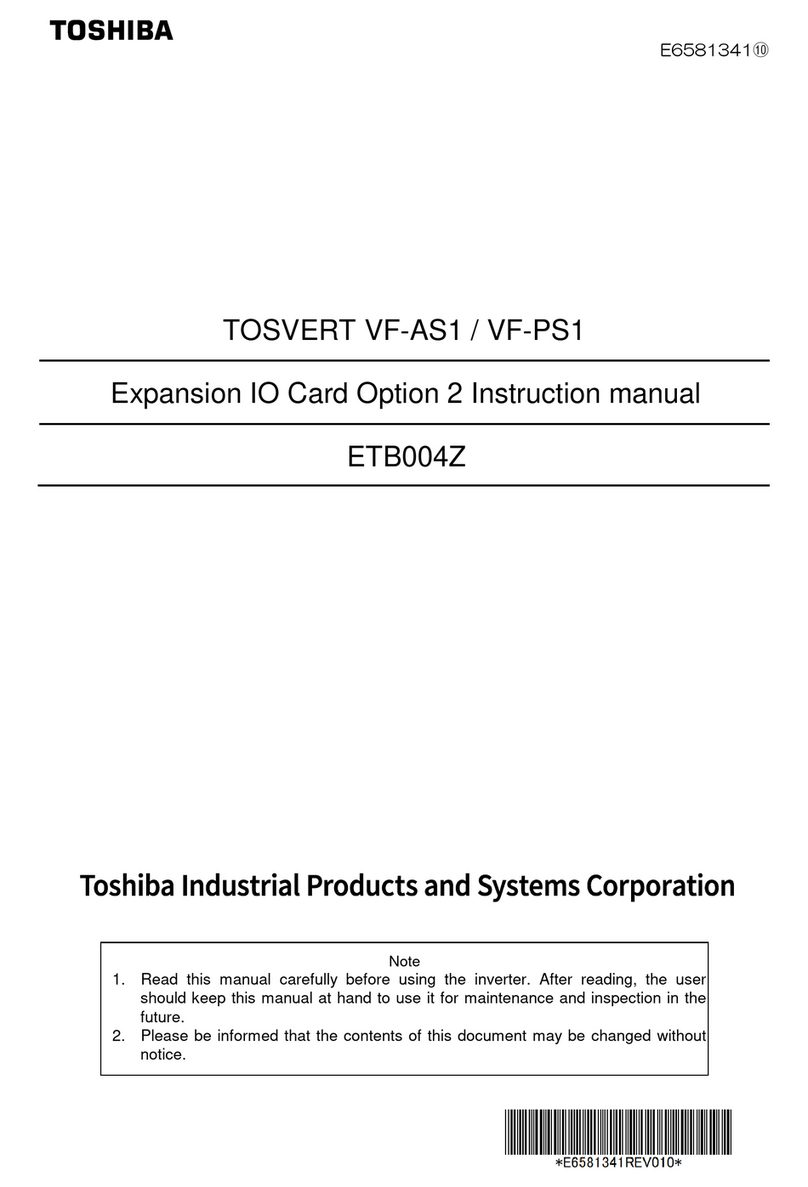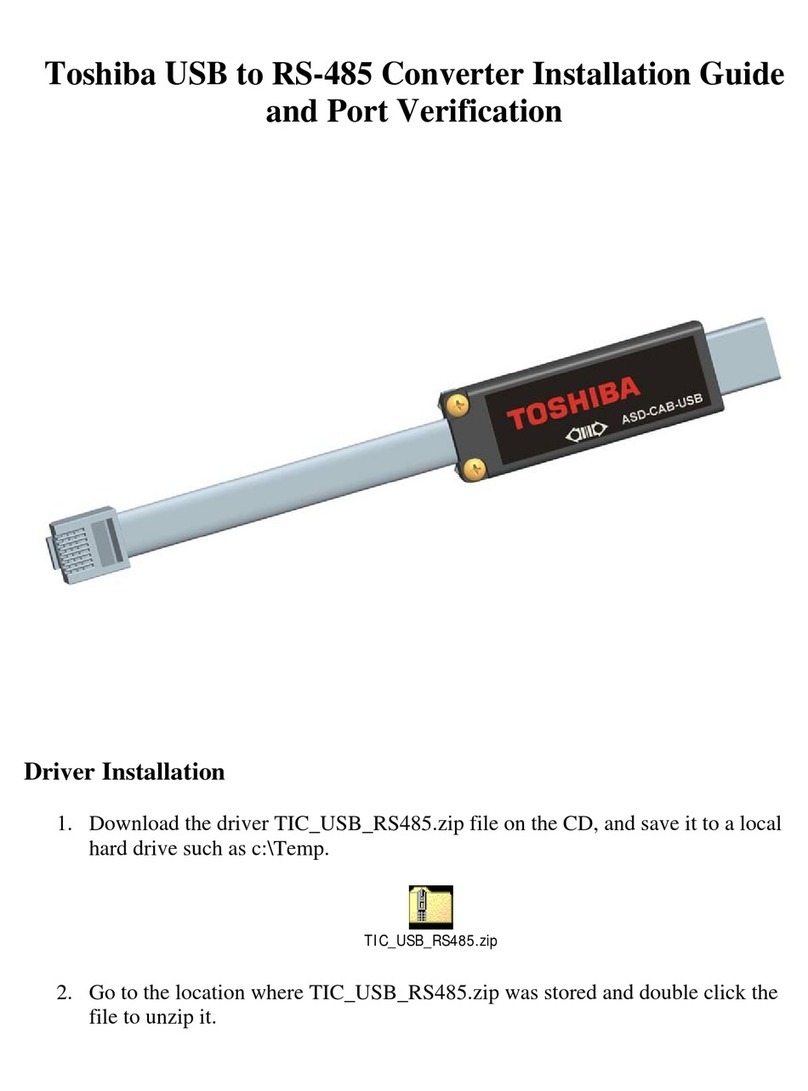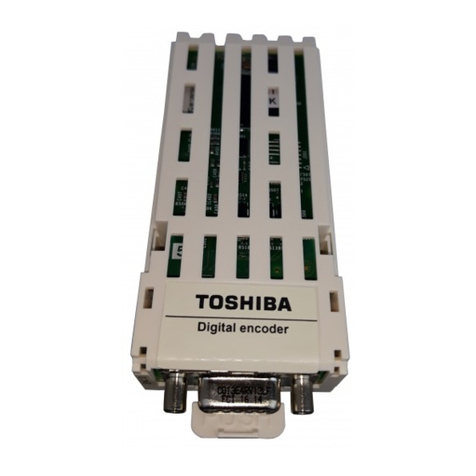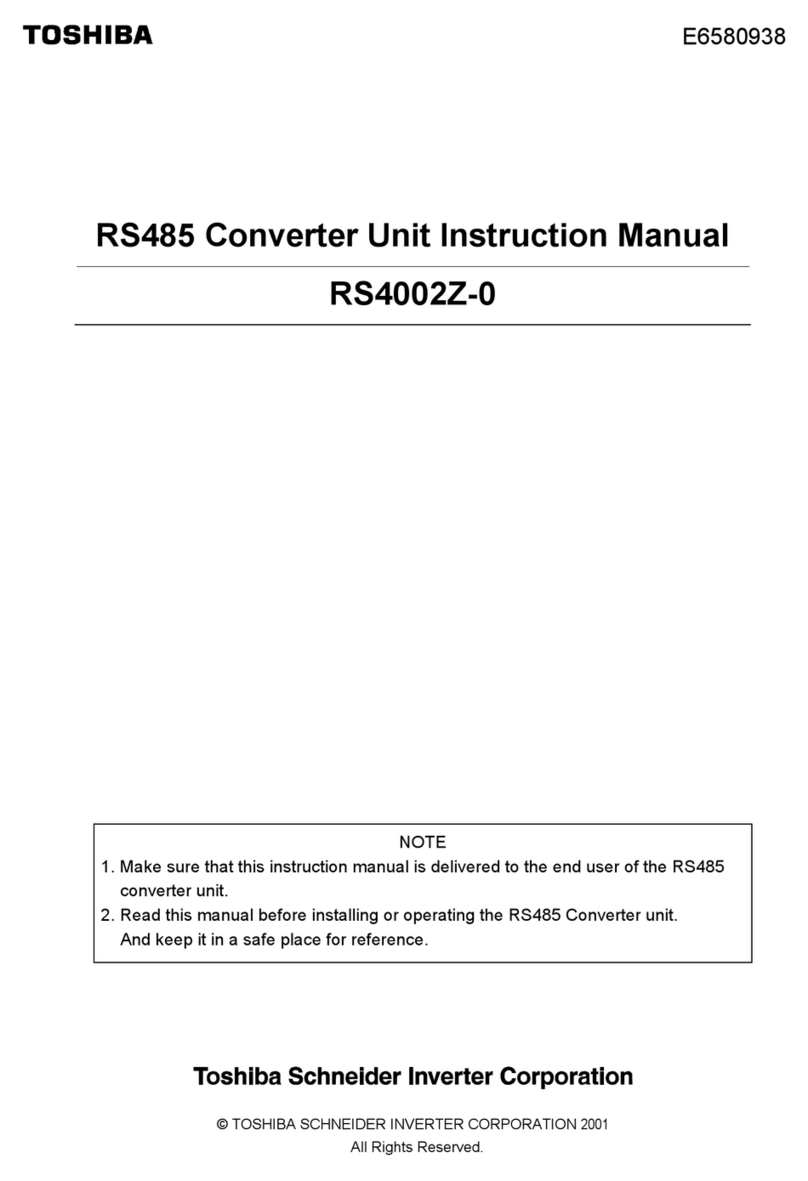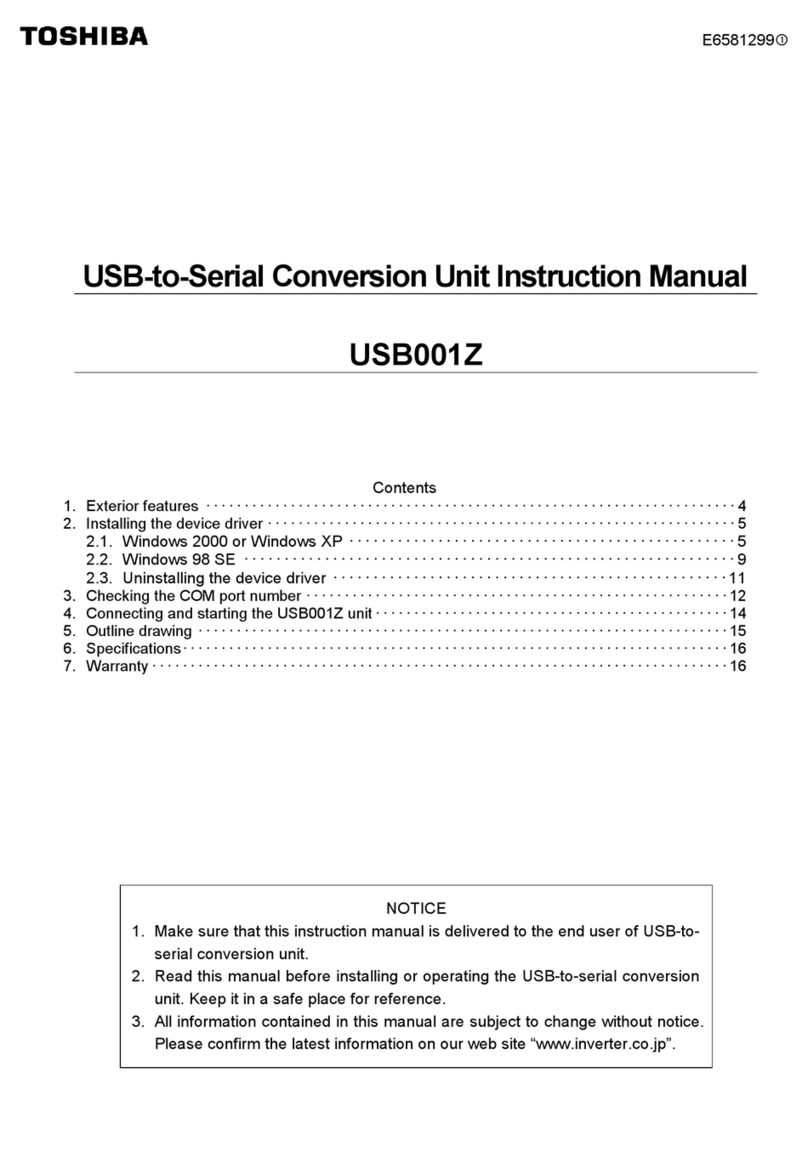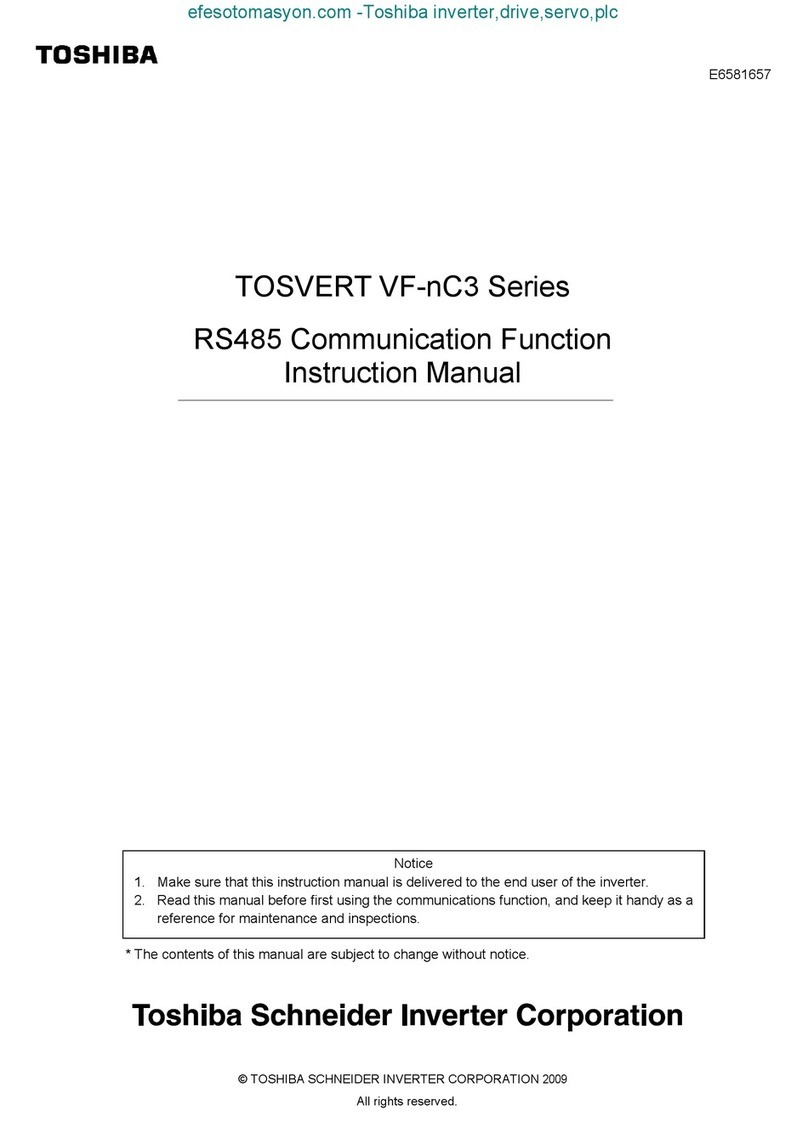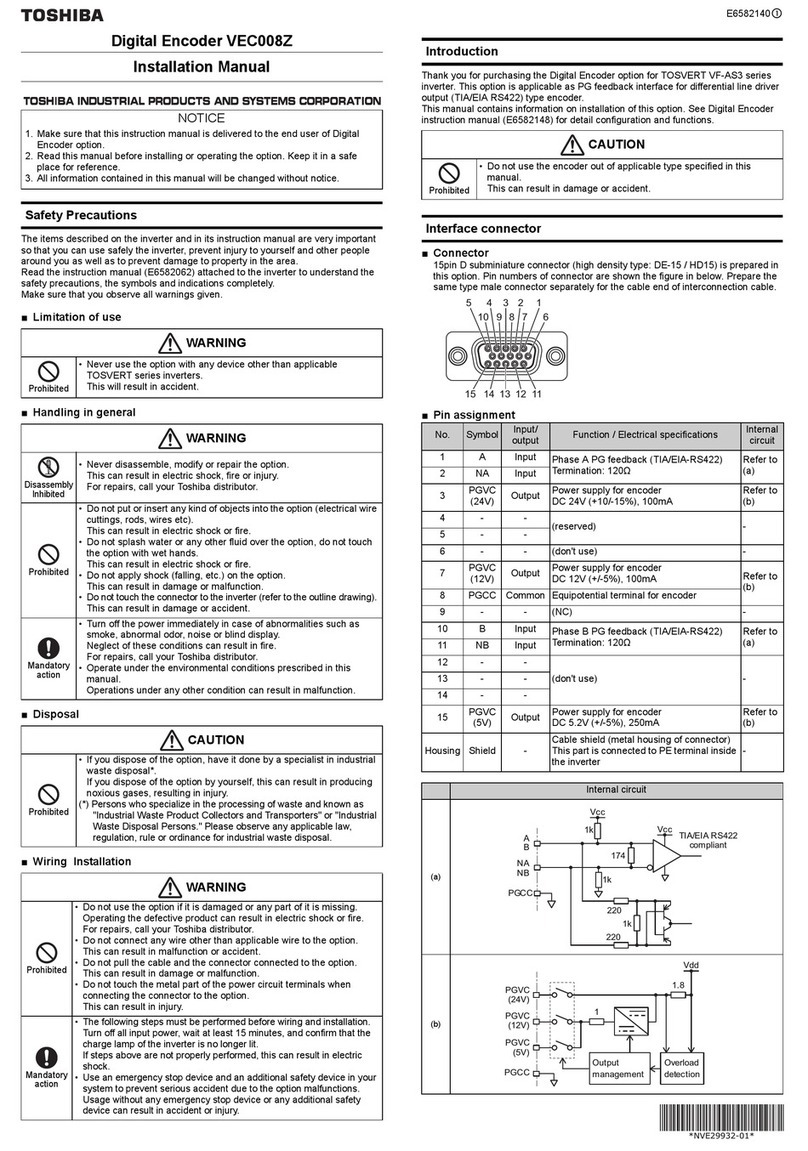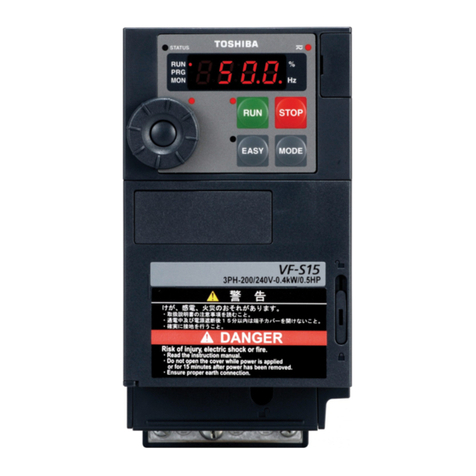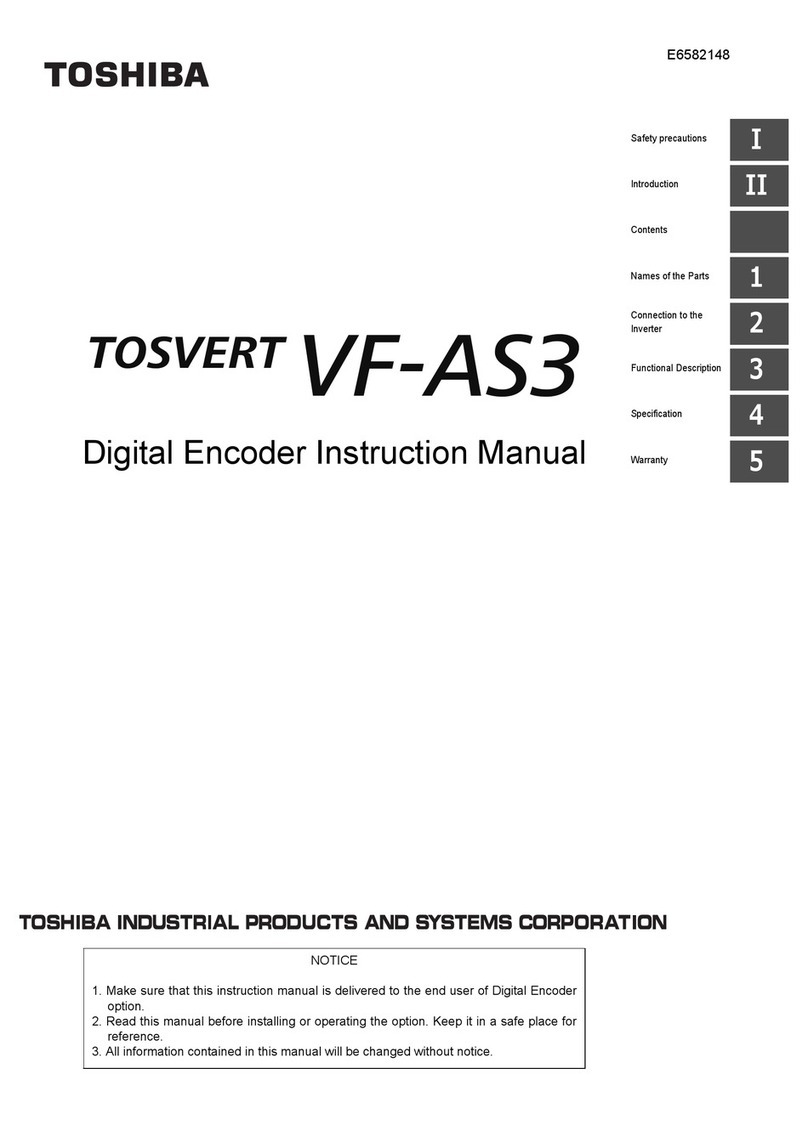
E6582143
VF-AS3
i
I
3
9
Contents
1 Communication function overview .......................................................................................................................... 1-1
2 Transmission specifications .................................................................................................................................... 2-1
3 RS485 communication wiring diagram ................................................................................................................... 3-1
4 Selecting communication protocol .......................................................................................................................... 4-1
4. 1 Reception frame completion process ............................................................................................................. 4-1
5 TOSHIBA inverter protocol ..................................................................................................................................... 5-1
5. 1 TOSHIBA inverter protocol transmission format ............................................................................................. 5-2
5. 1. 1 ASCII mode transmission format ...................................................................................................... 5-2
5. 1. 2 Binary mode transmission format ..................................................................................................... 5-5
5. 1. 3 Block communication transmission format ....................................................................................... 5-8
5. 2 Transmission command ................................................................................................................................ 5-13
5. 3 Transmission error ........................................................................................................................................ 5-16
5. 4 Broadcast communication function ............................................................................................................... 5-17
5. 5 Usage examples ........................................................................................................................................... 5-19
6 MODBUS-RTU protocol .......................................................................................................................................... 6-1
6. 1 MODBUS-RTU transmission format ............................................................................................................... 6-2
6. 1. 1 One word reading command (03H) .................................................................................................. 6-3
6. 1. 2 Block reading command: Indirect reading (03H) .............................................................................. 6-4
6. 1. 3 Block reading command: Direct reading (03H) ................................................................................. 6-7
6. 1. 4 Word writing command (06H/10H) ................................................................................................... 6-9
6. 1. 5 Block writing command: Indirect writing (10H) ............................................................................... 6-11
6. 1. 6 Block writing and reading command: Indirect writing and reading (17H) ....................................... 6-13
6. 1. 7 Model information reading command (2BH) ................................................................................... 6-16
6. 2 CRC calculation ............................................................................................................................................ 6-18
6. 3 Error code ..................................................................................................................................................... 6-19
7 Inverter-to-inverter communication ([F806] or [F826]) ............................................................................................ 7-1
7. 1 Speed proportional control ([F810] to [F814]) ................................................................................................. 7-5
7. 2 Transmission format of inverter-to-inverter communication (reference) ......................................................... 7-8
8 Communication-related parameters ....................................................................................................................... 8-1
8. 1 Baud rate ([F800] or [F820]), Parity bit ([F801] or [F821]) .............................................................................. 8-5
8. 2 Inverter number ([F802]) ................................................................................................................................. 8-5
8. 3 Communication time-out detection function ([F803], [F804], [F808], or [F823], [F824], [F828]) ..................... 8-6
8. 4 Transmission wait time ([F805] or [F825]) ...................................................................................................... 8-7
8. 5 Free memorandum ([F880]) ............................................................................................................................ 8-8
8. 6 Parameter writing ([F897]) .............................................................................................................................. 8-8
8. 7 Communication option reset ([F899]) ............................................................................................................. 8-8
9 Control through communication .............................................................................................................................. 9-1
9. 1 Command through communication ................................................................................................................. 9-1
9. 2 Monitor through communication ..................................................................................................................... 9-9
9. 3 Using the panel (LED, keys) through communication ................................................................................... 9-22
9. 3. 1 LED settings through communication ............................................................................................. 9-22

